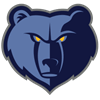A long spring training has just begun, following the only normal offseason in recent memory. This (rather long) article will cover every job that's up for grabs during the upcoming five weeks of exhibition games for the all 15 National League clubs. Its American League counterpart will follow next week. This year, I've included each player's NFBC ADP since the start of February. I've also elected to order teams by their strength according to the FanGraphs Depth Charts projections, rather than alphabetically, on the theory that roles on stronger rosters are generally preferable, all else being equal. Pay particular attention to the players with very late ADPs on the first handful of teams. If things break their way, the role in which they find themselves could by itself make them significant bargains, as long as they're competent enough to hold onto it. These players usually go so late for a reason, but a sudden doubling of their projected plate appearances — unexpected, but in many cases, no more than one injury away — can't help but be a big boost to their value.
 San Diego Padres
San Diego Padres
1B/2B/DH: Jake Cronenworth (184), Ha-Seong Kim (246), Matt Carpenter (549), Nelson Cruz (582)
Four players will compete for these three spots. Cronenworth will be an everyday player, but his split between the two infield positions depends on the rest of the group. His .770 career OPS is strong at the keystone but nothing special at first base, but he could spend most of
A long spring training has just begun, following the only normal offseason in recent memory. This (rather long) article will cover every job that's up for grabs during the upcoming five weeks of exhibition games for the all 15 National League clubs. Its American League counterpart will follow next week. This year, I've included each player's NFBC ADP since the start of February. I've also elected to order teams by their strength according to the FanGraphs Depth Charts projections, rather than alphabetically, on the theory that roles on stronger rosters are generally preferable, all else being equal. Pay particular attention to the players with very late ADPs on the first handful of teams. If things break their way, the role in which they find themselves could by itself make them significant bargains, as long as they're competent enough to hold onto it. These players usually go so late for a reason, but a sudden doubling of their projected plate appearances — unexpected, but in many cases, no more than one injury away — can't help but be a big boost to their value.
 San Diego Padres
San Diego Padres
1B/2B/DH: Jake Cronenworth (184), Ha-Seong Kim (246), Matt Carpenter (549), Nelson Cruz (582)
Four players will compete for these three spots. Cronenworth will be an everyday player, but his split between the two infield positions depends on the rest of the group. His .770 career OPS is strong at the keystone but nothing special at first base, but he could spend most of his time there since Kim is more reliable at this stage of his career than either of the two veterans. He played strong defense at shortstop last season while slashing a respectable .251/.325/.383 (105 wRC+), but he'll be pushed to second base by the arrival of Xander Bogaerts. Carpenter and Cruz may wind up simply platooning at DH, but if both play well, Carpenter could find himself at first base while Cronenworth starts over Kim at second. Carpenter hit an incredible .305/.412/.727 for the Yankees last season, though that came in just 47 games, and his .231 xBA suggests he got more than a little lucky. The 42-year-old Cruz struggled to a .651 OPS for the 55-win Nationals last season, but he managed an .832 OPS or better in each of the previous nine years.
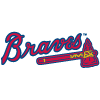 Atlanta Braves
Atlanta Braves
Shortstop: Vaughn Grissom (167), Orlando Arcia (702)
When Atlanta declined to bring back Dansby Swanson, it seemed the position was being left clear for Grissom, who hit .291/.353/.440 with five homers and five steals in 41 games as a rookie last season while filling in for Ozzie Albies at second base. Reports emerged in early February that Grissom wasn't a lock for the job, however, with defensive concerns potentially causing him to open the year in the minors. Those reports seem mainly speculative, but defensive metrics across the board painted Grissom as a below-average defender at second base, so it's not unreasonable to think that a move up the defensive spectrum could be beyond him. If Atlanta decides Grissom isn't a shortstop, Arcia (who's coming off the only above-average batting line of his seven big-league seasons) would be the likely choice ahead of nonroster invitees Ehire Adrianza and Adeiny Hechavarria.
Designated Hitter/Left Field: Travis d'Arnaud (200), Marcell Ozuna (338), Eddie Rosario (588)
D'Arnaud will spend most of his time at designated hitter this season after Atlanta dealt for Sean Murphy in December. Considering d'Arnaud's shaky health track record (he's only twice reached 400 plate appearances) and his age (34), resting his legs more often could boost his already above-average bat. He's hit .266/.324/.462 (114 wRC+) over the last three seasons. The other two require bounce-back years if they're to deserve playing time at either of these bat-first positions, but they're seemingly penciled in for a good amount of time between the two spots as of right now. Neither Ozuna nor Rosario has posted an above-average batting line since 2020. Both are in their 30s, and both are poor defenders.
Fifth Starter: Mike Soroka (359), Ian Anderson (541), Bryce Elder (630)
Soroka is a 25-year-old with a 2.86 ERA in 37 major-league starts. The last of those came on August 3, 2020, however. Since then, he's torn his Achilles twice and dealt with multiple other setbacks, including his shoulder in 2021, elbow in 2022 and already a minor hamstring issue this spring. If he looks as good as he did before all the injuries, the job is probably his as long as he's healthy, though it's worth remembering that his ERA came with a less appealing 4.33 SIERA. Anderson's trajectory shares some similarities with Soroka's, though not due to injury. He's a 24-year-old who owned a 3.25 ERA in 30 starts over his first two MLB seasons, plus a 1.26 ERA in eight playoff starts. Last year, he slipped all the way to a 5.00 ERA, with career worsts in strike rate (19.7 percent) and walk rate (11.0 percent). Elder made nine starts and one relief appearance in his rookie season last year and posted a 3.17 ERA, but that came with strikeout (20.7 percent) and walk (10.1 percent) rates that weren't all that much better.
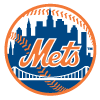 New York Mets
New York Mets
Catcher: Francisco Alvarez (370), Omar Narvaez (498), Tomas Nido (750)
This one could already be decided, with reports indicating Alvarez — whose brief five-game sample in the big leagues last season leaves him with UT-only eligibility in many leagues — is likely to open in the minors. He's 21 years old, and his glove is behind his bat, so that's probably fair, but the team may be leaving open the possibility that he forces his way onto the roster with a monster spring. Unless the unexpected happens, the left-handed Narvaez and right-handed Nido will platoon to begin the year. They finished with a wRC+ of 71 and 74, respectively, last season.
Sixth starter: Tylor Megill (517), David Peterson (522)
I won't note this category for any other teams, but it's worth mentioning here because: A. the Mets play in just about the ideal roster and park situation for a starting pitcher, and B. a team whose starters' average age is 35.4 will need to call on its sixth option frequently throughout the year, and quite possibly its seventh as well. Both Megill and Peterson are entering their age-27 season. Megill's 4.73 ERA in 137 career MLB innings is unimpressive on the surface, but it comes with a 3.71 SIERA and a strong 25.9 percent strikeout rate and 6.9 percent walk rate, suggesting things should go much better going forward, health permitting. Peterson has had better results, recording a 4.26 ERA in 222 career innings, including a 3.83 ERA last year. His walk rate has been in triple digits in all three of his seasons, but he's been able to offset that with increases in his strikeout rate (27.8 percent last season) and groundball rate (49.4 percent last year).
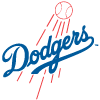 Los Angeles Dodgers
Los Angeles Dodgers
Middle Infield: Gavin Lux (217), Miguel Vargas (221), Chris Taylor (314), Miguel Rojas (605)
For a team as traditionally excellent (and still seemingly very good) as the Dodgers, there are a surprising number of spots available this spring, starting with both sides (and this year, I mean both sides) of the slightly larger second-base bag. The Dodgers had seemingly settled on a preferred double-play combo of the present and future, with 23-year-old Vargas at second and 25-year-old Lux starting at short, but Vargas suffered a hairline fracture in his right pinky. He's seemingly healing well and already able to play defense again, but the plan seemed less than certain even before injury. Vargas' seven major-league starts have come at first base or in left field, and the majority of his starts in the minors came at third. Lux has primarily played second base in the majors. It's an unusual direction to choose if the Dodgers go that route, especially in the first year without the shift, but it makes sense if the team wants to maximize its offense. Both Vargas (110 wRC+) and Lux (108 wRC+) project well enough according to wRC+. With Freddie Freeman at first base, Max Muncy at third and J.D. Martinez at DH, where else can either of them play? The alternative could be Lux at second and the glove-first veteran Rojas (1.5 percent career barrel rate) at short, or it could be Taylor at either infield spot if he isn't needed in the outfield.
Left and Center Field: David Peralta (601), Chris Taylor (314),Trayce Thompson (514), James Outman (557), Jason Heyward (741), Bradley Zimmer (undrafted)
The addition of Peralta somewhat clarified the situation in left field, but a 35-year-old lefty who hasn't posted a wRC+ above 106 in any of the last four seasons and is coming off back surgery is unlikely to be locked in for anything more than the large half of a platoon. Taylor should take one of these two spots if he isn't needed in the infield. He stumbled in the first year of a four-year, $60 million deal last year. The Dodgers need to see a bounce-back following a year in which Taylor struck out 35.2 percent of the time and posted a below-average wRC+ (93) for the first time since 2016, so he'll play somewhere. In his defense, he did still manage his third consecutive double-digit barrel rate.
Backing them up, or potentially claiming a starting role, is an interesting assortment of outfielders. Thompson, who will play for Great Britain at the World Baseball Classic, connects powerfully but rarely. For his career, he has an 11.0 percent barrel rate but a 30.6 percent strikeout rate. Those numbers jumped to 16.4 percent and 36.5 percent last season. Outman is a 25-year-old with four MLB games to his name, but he showed power (and elevated strikeout rates) in the minors. Heyward is a 33-year-old with an OPS of .700 of the last seven seasons and a .606 OPS in the last two, but he gave a great speech that one time and reportedly changed his swing this past offseason. If you thought the whole thing reminded you more of Cleveland than of Hollywood, that's also because Zimmer is here on a minor-league deal.
Closer: Evan Phillips (265), Daniel Hudson (339), Brusdar Graterol (533), Alex Vesia (645)
The Dodgers have said they don't need a dedicated closer this season, but teams that begin the season that way don't always end the year (or even end the first month) that way. Any of these pitchers has the opportunity at minimum to move quickly toward the front of a closer committee for a contender. Phillips was outstanding in his first full big-league season last year, backing up his 1.14 ERA with an 0.76 WHIP and 2.34 SIERA, though he only earned two saves. Hudson's 2.22 ERA was nearly matched by his 2.23 SIERA, and his five saves brought his career total to 32, but the 35-year-old suffered a season-ending torn ACL in June. He's recovered from that injury but is now battling ankle tendinitis. Graterol is in many ways a less extreme Jordan Hicks. He has excellent velocity, averaging 99.3 mph for his career, but that's led to grounders (60.3 percent for his career) rather than strikeouts (19.6 percent). He also lacks durability, topping out at 49.2 innings last season while missing time with elbow and shoulder injuries. Vesia owns ERAs of 2.25 and 2.15 in at least 40 frames in both of his two seasons as a Dodger, striking out a third of opposing batters in both years. Given the injury concerns ahead of him on the ADP list, the southpaw could be a good late option, though his save chances will be capped by his handedness if the situation remains matchup-based.
 St. Louis Cardinals
St. Louis Cardinals
Middle Infield: Tommy Edman (73), Brendan Donovan (294), Nolan Gorman (469), Paul DeJong (739)
The Cardinals lineup has a few veteran anchors surrounded by many mostly young and mostly interesting options to fill the rest of the positions. Edman is a clear everyday player (and Team Korea representative) at this point in his career. He had 30 steals in both 2021 and 2022, a feat matched only by Cedric Mullins. He seems to be set for shortstop. Donovan's 2B/3B/OF eligibility (and more in some formats) gives him a big boost in many leagues. Only Juan Soto, Alex Bregman and Yandy Diaz could match both his 12.8 BB percentage and 15.0 K percentage in at least 450 plate appearances last season, but he added just five homers and two steals to those impressive marks. He'll play often and at several positions, but should spend most of his time at second base.
Gorman's already tenuous ability to handle second base got even more questionable now that he can't be hidden by a shift, but he could still spend time there when someone else needs the DH spot. A 22-year-old with a 14.4 percent barrel rate as a rookie deserves the chance to show what he can do, though his 32.9 percent strikeout rate and poor glove could continue to hold him back. DeJong followed three straight years of above-average batting lines with three straight years of poor ones. He hit an awful .157/.245/.286 last season and spent 51 games in the minors, but he plays good defense at shortstop and could at least open the year starting against lefties.
Outfield: Tyler O'Neill (98), Lars Nootbaar (182), Jordan Walker (214), Brendan Donovan (294), Juan Yepez (328), Dylan Carlson (365), Alec Burleson (711)
O'Neill and Nootbaar flanking Carlson may be the default setup for the Cardinals on Opening Day, but the situation looks quite fluid at this point of camp. O'Neill's batting averages the last three seasons (.173, .286 and .228) seem metaphorical. Despite the big drop in average, he cut his strikeout rate to a career-low 26.9 percent last season while continuing to hit the ball hard (11.3 percent barrel rate), so he's a good bet for a bounce-back and an everyday role. Nootbaar is the hot breakout pick, and it's easy to see why: His 20.5 percent strikeout rate last season was a good mark, while his 14.7 percent walk rate and 12.1 percent barrel rate were excellent. As a lefty who had a fairly standard launch angle but pulled the ball a lot, he could see his .228 batting average rise a good amount thanks to the shift ban. Carlson is a 24-year-old switch-hitting center fielder with prospect pedigree and three seasons under his belt, but his fantasy stock is down after he homered just eight times and managed a fourth-percentile hard-hit rate last season.
A shakeup could come if Carlson's bat gets even more bland, or it could come by Jordan Walker forcing the issue. Walker is just 20 years old and hasn't reached Triple-A, but he's the fourth-best prospect in the game per our prospect rankings, and FanGraphs gives him the potential for 80-grade game power. He hasn't shown the strikeout issues you'd expect a 6-foot-5 hitter of that profile to have, striking out 21.6 percent of the time in a full Double-A season last year. He's already started the transition to the outfield, but he's spent more of his time at third base, so the "working on his defense excuse" wouldn't be a lie in his case. Donovan could spend time in a corner spot, same as Yepez, but the latter is more of a DH. He's a more well-rounded hitter than fellow-second year bat Gorman, posting an average 22.3 percent strikeout rate but a merely good 9.2 percent barrel rate to go with his lack of glove or speed as a rookie. Burleson also offers little with his glove or legs, but his 17.0 percent strikeout rate and 10.3 percent barrel rate in a small sample of 16 games last year were both encouraging.
Designated Hitter: Juan Yepez (328), Nolan Gorman (469)
The Cardinals will likely give many players a rest in the DH spot this season (10 players started there last year), including everyone who loses out on one of the starting spots listed above. I've highlighted the two players who the team likely wants to keep off the field as often as possible. Gorman hits left-handed while Yepez bats righty, so if a platoon develops, their current ADPs could wind up looking backward. Gorman's clear weakness with his high strikeout rate does give him more risk, but he was the better prospect, and the pair posted a wRC+ within two points of each other as rookies.
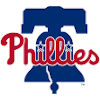 Philadelphia Phillies
Philadelphia Phillies
Fifth Starter: Andrew Painter (303), Bailey Falter (514)
The defending National League champions have a rather settled roster, but their lone significant battle is one of the most exciting contests of the spring. As the ADPs suggest, the fantasy community clearly wants Painter to emerge the winner, and the Phillies likely do, too. He's the best pitching prospect in baseball per our rankings, having recorded a 1.56 ERA, 38.7 percent strikeout rate and 6.2 percent walk rate in 22 professional starts. None of those came at Triple-A and just five came at Double-A, so there's no guarantee the 19-year-old will immediately be ready to dominate big-league hitters, but if he shows this spring that he can handle it, the Phillies won't want to waste any more of his innings in the minors. The Phillies have given every reason to believe they'll put their best team on the field right away, but that still doesn't mean Painter will waltz into the job, as Falter is a perfectly competent option in his own right. In 16 starts and four relief outings last season, he produced a 3.86 ERA, with a strong 4.9 percent walk rate offsetting a slightly sub-par 21.2 percent strikeout rate.
Closer: Seranthony Dominguez (303), Craig Kimbrel (324), Gregory Soto (599), Jose Alvarado (606)
This probably isn't a proper positional battle, as the Phillies have suddenly joined the ranks of the forward-thinking. Five different Phillies earned a save during last year's playoffs, and every indication is that the team isn't looking to switch back to a more rigid setup. Instead, the Phillies have assembled a high-leverage corps full of pitchers with good stuff but shaky control. The quartet's ERAs ranged from 3.00 to 3.75 last season, but their walk rates all finished in double-digits. One of the righties (Dominguez or Kimbrel) is likely to lead the team in saves if the team plays the matchups all year, though Alvarado may be the best value pick. He figured things out after a midseason demotion, posting a 1.66 ERA in 38 innings after his mid-June return. If anyone is to emerge from this group as a true closer, it will likely be Kimbrel, whose 394 career saves rank seventh all time, but he's entering his age-35 season and is coming off a year in which he posted a career-low 27.7 percent strikeout rate. He's reportedly fine with a committee spot, so he'd have to really look like peak Kimbrel for the Phillies to change course.
 Milwaukee Brewers
Milwaukee Brewers
Second Base/Third Base: Luis Urias (231), Brice Turang (501), Brian Anderson (539), Abraham Toro (702), Mike Brosseau (749)
Urias should fill one of these two spots most nights. He's established himself as an above-average hitter, finishing with a wRC+ of 112 and 110 the last two years, and another step forward is still possible as he enters his age-26 season, though he doesn't stand out in any one area other than his defensive versatility. Turang is the exciting young option who could claim the second base job, though it's not yet clear if he'll get a legitimate shot to do so on Opening Day. He has plenty of speed, going 34-for-36 on the basepaths for Triple-A Nashville last year, but he's a contact-over-hit type, with 23 total homers in four professional seasons. The 19.6 percent strikeout rate he showed last season was good but not nearly good enough to sustain an offensive profile on its own.
If Turang doesn't break camp in the bigs, Urias will handle second base while the other players fight for time at third. Anderson had three successful seasons as a regular for the Marlins from 2018 to 2020 and is just 29 years old, but his .233/.321/.359 line (93 wRC+) over the last two seasons doesn't cut it at the hot corner. Toro came over from Seattle in the same deal that made Jesse Winker a Brewer. He owns a 16.4 percent strikeout rate over the last two years but has hit just .212 thanks in part to a very low 31.7 percent hard-hit rate. Brosseau owns a respectable 109 wRC+ for his career but has platoon splits that limit him to a small-side platoon role, with an .823 career OPS against lefties and a .651 OPS against righties.
Center Field/Right Field: Jesse Winker (248), Garrett Mitchell (309), Tyrone Taylor (478), Sal Frelick (564)
Christian Yelich has an everyday role in left field, but the rest of the Milwaukee outfield isn't entirely settled. Jesse Winker should start somewhere against every righty, but most of those starts may come at designated hitter rather than right field. Mitchell, the 20th-overall pick in the 2020 draft, has the glove and speed to handle center field and seems to have the inside track there. He stole eight bases in 68 PAs in his brief debut last year while hitting .311/.373/.459, but his 41.2 percent strikeout rate suggests a big step back is coming. The right-handed Taylor should start regularly against southpaws at one of the two spots and could be the full-time right fielder if Winker is mostly a DH. He's been above-average as a big leaguer, but not by much, hitting .241/.303/.453 (106 wRC+) in 250 games. Things could get crowded if 2021 15th-overall pick Sal Frelick is given a legitimate shot to break camp. He hit .331/.403/.480 with an 11.2 percent strikeout rate across the three highest levels of the minors last season, but with less than two months at Triple-A under his belt, he may be stuck waiting until the summer for a call-up.
Designated Hitter: Jesse Winker (248), Keston Hiura (595), Luke Voit (538)
This battle is linked to the previous one. If the Brewers don't trust Winker to play the field on a regular basis, he'll wind up here more often than not. Against lefties, and potentially righties as well if Winker ends up primarily in right field, one of Hiura or Voit will likely get the nod. Hiura did his best Joey Gallo impression last season, combining a career-best 15.3 percent barrel rate with a career-worst 41.7 percent strikeout rate, but it worked much better than it did in his disastrous 2021 campaign, resulting in a .226/.316/.449 line, good for a 115 wRC+. Voit recorded a similar 14.7 percent barrel rate, and his 31.5 percent strikeout rate, while poor, was far better, but the result was a .226/.308/.402 line and a 102 wRC+. He's merely in camp as a nonroster invitee.
 San Francisco Giants
San Francisco Giants
Catcher: Joey Bart (384), Roberto Perez (741), Blake Sabol (743), Austin Wynns (751)
Buster Posey retired 15 months ago, but Bart looks no closer to being the next great Giants catcher than he did that day. The 2018 second-overall pick played a career-high 97 MLB games last season, and while his 10.1 percent barrel rate was strong, his 38.5 percent strikeout rate was almost unplayably high. Toss in sub-par framing numbers and it looks like he might not have what it takes to be a starting catcher. The fact that he comes to camp not even guaranteed a roster spot let alone a starting role despite the lack of quality elsewhere on the catcher depth chart is a worrisome sign. Perez has only crossed 250 plate appearances in one of his nine big-league seasons. He's now 34 years old and missed most of last season due to hamstring surgery. Sabol was a Rule 5 pick, selected by the Reds and then traded for cash considerations. He's a career .284/.363/.497 in the minors, but there are doubts about his ability to stick behind the plate. Wynns has never reached the 200 plate appearance threshold and enters his age-32 season with a career .231/.275/.337 line.
First Base/Third Base: Wilmer Flores (350), J.D. Davis (498), David Villar (560), LaMonte Wade Jr. (571),
Veterans Brandon Belt and Evan Longoria are gone, leaving a mix of capable but largely unexciting corner infielders in their wake. Flores, who should spend time at first, second and third in the Giants' flexible setup, has been consistently above-average but never by much, posting a wRC+ between 102 and 120 for seven straight seasons. Davis hit the ball harder than ever (16.2 percent barrel rate) in 115 games last season but also struck out more than ever (33.4 percent) last year, becoming an even more extreme version of that archetype after his midseason move from the Mets. There's upside for the 29-year-old if he can keep the power while cutting the whiffs, but he'll have to hit quite well to overcome his poor glove and hold down a regular role. Villar hit .231/.331/.455 in 52 games as a 25-year-old rookie last season, striking out nearly as often as Davis (32.0 percent) while managing a merely good 9.1 percent barrel rate. Wade is the only lefty in the quartet and plays both first base and all three outfield positions, so he should find a spot against most righties if he bounces back from a down season. He hit just .207/.305/.359 (93 wRC+) last season, but his 9.5 percent barrel rate and 20.3 percent strikeout rate suggest things should improve.
Third/Fourth/Fifth/Sixth(?) Starter: Ross Stripling (299), Sean Manaea (304), Alex Wood (391), Anthony DeSclafani (581), Jakob Junis (697)
Logan Webb and Alex Cobb seem safe atop the rotation, but things get murky after that, not just in terms of who will fill out the rest of the group but how large that group will be, as a six-man rotation to start the year appears possible. Stripling and Manaea signed two-year, $25 million deals within a day of each other in mid-December and seemingly have the firmest grip on starts. Stripling has extensive experience as a swingman, making 104 starts and 100 relief appearances in his seven-year career, but his 3.01 ERA should keep him in the rotation for now. Manaea saw his ERA jump to 4.96 last season, but his 3.90 SIERA suggests things are still fine under the hood. Wood had an even more extreme gap between his ERA and SIERA, which finished at 5.10 and 3.45, respectively. DeSclafani made just five poor starts while battling ankle issues, but he's back to full health and recorded a 3.17 ERA in 31 starts in 2021. Junis produced a surprising 2.63 ERA in 48 innings to start last season before straining his hamstring. He struggled to a 5.77 ERA the rest of the way, albeit with similar peripherals.
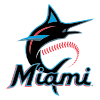 Miami Marlins
Miami Marlins
Left Field: Bryan De La Cruz (234), Jesus Sanchez (557)
If this ends up as a strict platoon, the left-handed Sanchez would play much more than the right-handed De La Cruz, but their respective ADPs indicate a belief that the latter will win the job this spring. Both have shown above-average, but not elite, power alongside too many strikeouts thus far in the big leagues, a span of 172 games for Sanchez and 173 for De La Cruz. Sanchez's strikeout rate is about four points higher, and his wRC+ is 12 points worse, though he did at least start making more contact last season. De La Cruz more than doubled his wRC+ (from 72 to 146) after the break while making harder contact, which seemingly explains why he's considered the favorite.
Fifth Starter: Edward Cabrera (215), Braxton Garrett (416)
The Marlins cleared space in the rotation by sending Pablo Lopez to Minnesota, but they still have a competition for the final place. Cabrera recorded a 3.01 ERA in 14 starts last season, but his 4.05 SIERA suggests he wasn't close to dominant, with his 11.3 percent walk rate the primary culprit. Garrett's 3.58 ERA in his 17 starts was better supported by his peripherals, including a 24.1 percent strikeout rate and 6.4 percent walk rate. It's possible both pitchers, who are each entering their age-25 season, open the year as starters in a six-man setup. Sixto Sanchez and Eury Perez are also in camp and could push for starts later in the year, but every indication seems to be that the battle is between Cabrera and Garrett for now.
Closer: Dylan Floro (334), A.J. Puk (422), Tanner Scott (624), Matt Barnes (625)
The Marlins are planning on using a closer committee for now, and committees on teams projected for losing records don't make for the most fertile ground for save speculation. Still, it's possible someone emerges atop the group, and it will at least be relevant for deeper leagues to track which relievers are emerging as preferred options. Floro ended last year with the role, with seven of his 10 saves coming in the final month. His draft price reflects the fact that he was the presumed incumbent, but his 21.8 percent strikeout rate from last season fits poorly in the ninth inning, so it's no surprise to see the Marlins going the committee route. Puk was potentially ticketed for a return to the rotation in Oakland, but the lefty is seen as a high-leverage weapon by his new team. His 3.56 ERA and 26.7 percent strikeout rate in 91 career MLB innings are good marks but not necessarily closer material. Scott led the team with 20 saves last season and struck out 31.1 percent of opposing batters, but his 15.9 percent walk rate led to a poor 4.31 ERA. Barnes is a reclamation candidate after being DFA'd by Boston and traded for cash in January. He posted a 36.7 percent strikeout rate from 2018 to 2021 alongside a 3.80 ERA, but struck out just 19.3 percent of batters last season as his ERA jumped to 4.31.
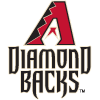 Arizona Diamondbacks
Arizona Diamondbacks
Catcher: Gabriel Moreno (227), Carson Kelly (489)
Moreno, who came over in the trade that sent Daulton Varsho to Toronto, is clearly the catcher of the future in Arizona, if his prospect pedigree is to be believed. The question for single-season leagues is whether the future is guaranteed to start on March 30 or if Kelly will get the chance to prove he still deserves a significant role. Kelly hit just .211/.282/.334 last season, but he produced above-average batting lines and above-average barrel rates in both 2019 and 2021. Moreno is very talented and just 23 years old, but note that he peaked as the 23rd-ranked prospect on James Anderson's fantasy prospect rankings despite getting into the top five on other lists that focus on real baseball. Moreno showed minimal power in his 25-game debut, homering once and managing a 3.3 percent barrel rate, but he hit .319 and struck out just 11.0 percent of the time.
Outfield: Corbin Carroll (72), Jake McCarthy (114), Lourdes Gurriel (232), Alek Thomas (517), Kyle Lewis (651)
Assuming he comes anywhere close to expectations in his first big-league season, Carroll will play nearly everyday, but whether that's in center or an outfield corner depends on who wins the spots around him. Carroll's .260/.330/.500 line in his 32-game debut last year outpaced his underlying numbers, but his minor-league stats and prospect pedigree are both excellent. McCarthy's draft position reflects the fact that drafters see him as nearly locked into playing time. He swiped 22 bags in 99 games last year and is one of just five players projected for 30 steals by ATC this season, so he'll be a big boost to fantasy rosters if he does indeed hold down a job. His .283/.342/.427 line (116 wRC+) last season says that he will, but that came with a 33.3 percent hard-hit rate.
Gurriel joined from Toronto in the aforementioned Varsho deal, with Arizona attempting to address the lefty/righty split in their outfield. Gurriel should start against every southpaw, but it remains to be seen how many starts he earns against same-sided pitching. He remained an above-average hitter for the fifth consecutive season last year but homered just five times as his barrel rate collapsed to 3.8 percent. Thomas will look to start ahead of him against right-handers, but his rookie season was a disappointment considering his prospect pedigree. He hit just .231/.275/.344 with eight homers and four steals in 113 games. Lewis gives the D-Backs another right-handed bat, but it's a mystery how much he can offer at this point. His power overcame his strikeouts over his first three seasons in Seattle as he hit .258/.343/.450, but he dealt with knee surgery and a concussion, and didn't look good in his 18 big-league games.
Fifth Starter: Drey Jameson (408), Brandon Pfaadt (432), Ryne Nelson (544), Tommy Henry (undrafted)
Four pitchers, all 24 or 25 years old and with an average of four MLB starts between them, will compete for Arizona's final rotation spot. Jameson produced a 1.48 ERA in his four-start cameo, with strikeout (24.5 percent), walk (7.1 percent) and groundball (56.1 percent) rates all better than league average, though he stumbled to a 6.95 ERA in 22 Triple-A outings. Pfaadt is the only member of the group not yet on the 40-man roster, but he could still claim the job if the Diamondbacks decide they're ready to win and that he's ready to go. His stock took a big step forward after he recorded a 31.6 percent strikeout rate and 4.8 percent walk rate in 29 starts in the upper minors last season. Nelson's 2022 season went much like Jameson's: an excellent ERA (1.47) in a tiny big-league sample (three starts) but with a poor ERA (5.43) at the Triple-A level during the rest of the year. Henry accounts for more than half of the group's major-league experience, but his 5.36 ERA in his nine starts came with similarly poor peripherals.
Closer: Mark Melancon (580), Kevin Ginkel (633), Andrew Chafin (639), Joe Mantiply (639), Scott McGough (690)
It doesn't appear as though the Diamondbacks are set to open the season with a conventional closer, but that may be due to a lack of viable options as much as anything. Manager Torey Lovullo has typically used true closers in the past, so anyone from this group could emerge at some point to claim a large number of saves. Melancon's experience (262 career saves) has him going first off the board, but begrudgingly at best. His ERA jumped to 4.66 last season, while his strikeout rate collapsed to 14.2 percent. A big rebound in his age-38 season would be a surprise. Ginkel backed up a 3.38 ERA with a 3.44 SIERA last season, though his 24.2 percent strikeout rate isn't classic closer material. Chafin recorded a 2.83 ERA and 27.6 percent strikeout rate last year with the Tigers. He could well be the most talented member of the group, though his left-handedness could keep his save numbers down if the team maintains a matchup-based approach all year. Mantiply was an All-Star last season and finished with a 2.85 ERA. His 2.5 percent walk rate was outstanding, but he'll face the same issues as a lefty that Chafin does. McGough is a wild card. His MLB experience consists of six relief outings for the Marlins in 2015, but he saved 69 games over the last two years in Japan while posting a 2.44 ERA.
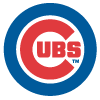 Chicago Cubs
Chicago Cubs
First Base/Designated Hitter: Trey Mancini (265), Matt Mervis (320), Eric Hosmer (580), Edwin Rios (714)
Early in draft season, Mervis looked like a potential bargain, as he hit .309/.379/.605 in the upper minors last season, but the Cubs have since signed three players ahead of him on the depth chart, likely relegating him to Triple-A to open the year. Mancini is the best of the bunch. His production tailed off after a midseason move to Houston last year, but his underlying numbers have remained remarkably consistent throughout his career. In each of his five full seasons, he finished with a strikeout rate between 21.1 and 24.1 percent, and a barrel rate between 9.3 and 10.6 percent. Hosmer is in town to bring some veteran presence, and his numbers could improve now that his groundball-heavy approach is no longer punished by the shift, but he's unlikely to suddenly start hitting for meaningful power. Rios will turn 29 in April and has never reached 100 plate appearances in a season, but his career .219/.299/.492 line is nonetheless good for a 112 wRC+. He strikes out a ton (32.0 percent for his career) but hits the ball very hard (15.5 percent barrel rate).
Third Base: Christopher Morel (248), Patrick Wisdom (505), Nick Madrigal (689), Edwin Rios (714)
Morel (whose eligibility varies by format but starts as 2B/OF in NFBC leagues) seems more likely to end up as the top backup at nearly every spot on the diamond than a true starter anywhere, but he'll still play plenty in that role. If he does earn a conventional starting job, the hot corner looks like the most likely location. He comes with significant strikeout concerns, having struck out 32.2 percent of the time as a rookie, but with 88th-percentile sprint speed and a 91st-percentile barrel rate, the power/speed upside is very real. Wisdom appears to have a good shot to remain the starter, however. He has a similarly extreme power-over-hit profile, slashing .207/.298/.426 with 25 homers last season, but he's also eight years older and isn't likely to be part of the next great Cubs team. Madrigal has taken grounders at third base in camp and comes with the pedigree of being a fourth-overall pick in 2018, but he's unlikely to be anything more than a utility infielder. He's hit .289 in 552 career MLB games with a single-digit strikeout rate, but he's homered just twice and stolen just six bases. Rios could factor in here as well, though his glove has graded out poorly.
Fifth Starter: Hayden Wesneski (361), Adrian Sampson (723), Javier Assad (734)
The final spot in the Cubs' rotation will be up for grabs to start the year with Kyle Hendricks expected to miss the beginning of the season, and whoever wins it could have the chance to stake his claim for a more permanent spot. Wesneski is the name getting all the hype, though the Cubs have yet to tip their hand. The 25-year-old came over from the Yankees in the Scott Effross trade and recorded a 2.18 ERA and 33:7 K:BB in his 33-inning debut. Sampson has by far the most MLB experience in the group. He owns a 3.03 ERA in 139.2 innings in the two years since his return from Korea, but that comes with a 17.6 percent strikeout rate and a 4.44 SIERA. Assad, like Wesneski, is a 25-year-old with a small handful of big-league innings (37.2) under his belt, but he's not as highly regarded as a prospect. He posted a 3.11 ERA last year, but his poor peripherals resulted in a 5.09 SIERA.
Closer: Brandon Hughes (424), Adbert Alzolay (530), Michael Fulmer (689), Brad Boxberger (626), Jeremiah Estrada (669), Rowan Wick (717)
As with many teams on this list, it's not yet clear that the Cubs will even have a true closer this season, but figuring out who's moving to the front of a committee is still worthwhile in deep leagues. Hughes, who saved five games in the final month of last season, is the favorite by ADP. He recorded a 3.12 ERA and a 28.5 percent strikeout rate as a rookie, though as a lefty, he's unlikely to lead the team in saves if a matchup-based approach is used all year. Alzolay is second on the ADP list, but that may be because some drafters expected him to start, which is reportedly off the table for now. The 27-year-old fits the profile of someone who could break out after a move to the bullpen, as he has good stuff but durability issues. Fulmer and Boxberger are veterans with closing experience who joined on one-year deals. They recorded ERAs of 3.39 and 2.95 last season, though neither has elite strikeout stuff. Estrada is at the opposite end of the scale. His stuff has received rave reviews, but he's only made five big-league appearances and could open the year with Triple-A Iowa. Wick has saved at least two games for the Cubs in four straight seasons and saved a career-high nine last year, but that came with a 4.22 ERA and mediocre peripherals.
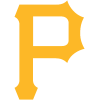 Pittsburgh Pirates
Pittsburgh Pirates
First Base: Carlos Santana (547), Ji-Man Choi (616), Connor Joe (634), Miguel Andujar (683)
There may be no more unappealing first-base job in the league than this one in terms of both park and team context, but someone has to win it. Santana turns 37 in April and hasn't produced a wRC+ above 102 for three straight years, though his plate skills remain excellent. Choi owns a .591 career OPS against lefties, but his .809 mark against righties could earn him plenty of starts given the uninspiring alternatives. Joe produced a forgettable .697 OPS as a Rockie last season, including a .646 OPS away from Coors Field, so it's hard to have high hopes after a big park downgrade. Andujar has fewer obstacles in his way than he ever had as a Yankee, but he's hit just .230/.257/.324 over the last four years.
Corner Outfield: Andrew McCutchen (467), Jack Suwinski (551), Connor Joe (634), Cal Mitchell (705)
McCutchen returns to the place where he made his name for his age-36 season. A combination of nostalgia and a lack of compelling alternatives should keep him in the lineup at left field or designated hitter as often as his body allows, though his modest 103 wRC+ over the last three seasons wouldn't earn him a regular role at either spot for a contender. Suwinski hit a league-average .202/.298/.411 with 19 homers in his 106-game debut last year. His 12.2 percent barrel rate was strong, but it came with a 30.6 percent strikeout rate. Mitchell hit just .226/.286/.349 in 69 games, but he posted a .937 OPS at the Triple-A level. Joe could feature here as well if he doesn't earn time at first base. Whoever misses out at first base and in the outfield corners will fight for time at the designated hitter spot.
Fifth Starter: Luis Ortiz (523), Johan Oviedo (702), Vince Velasquez (734)
Velasquez signed a one-year, $3.15 million deal in December and may have the inside track to open the year in this role, but his ADP shows that drafters remain disinterested in the 30-year-old righty. His 4.78 ERA as a swingman for the White Sox last season was his best mark since 2016, though he did produce a career-best 7.8 percent walk rate and the move to pitcher-friendly PNC Park could make his typically low groundball rates less of a problem. Ortiz is the name to know for the future, but the Pirates showed with Oneil Cruz last season that they see no need to call up prospects on Opening Day. He produced a passable 4.50 ERA in his four-start debut last season despite a 14.5 percent walk rate, but he's not a finished product, having only made two Triple-A starts, so it wouldn't necessarily be service-time manipulation for him to open the year in the minors. Oviedo joined from St. Louis in the Jose Quintana trade last year. He can't match Ortiz's prospect pedigree, but he's also just 24 years old and looked good in eight starts and 13 relief appearances last season, posting a 3.21 ERA.
 Cincinnati Reds
Cincinnati Reds
Outfield: Jake Fraley (302), Wil Myers (366), TJ Friedl (460), Nick Senzel (613), Nick Solak (710), Will Benson (730), Chad Pinder (731)
A mix of largely uninspiring options will compete for time in the Cincinnati outfield. Fraley's 21 homers and 14 steals in 512 plate appearances across the last two seasons suggest fantasy promise, but he's also dealt with several injuries and produced a startlingly low 27.6 percent hard-hit rate last season. Myers joined a one-year deal after a knee injury limited him to 77 games in San Diego last season. Outside of the pandemic-shorted 2020 campaign, he's produced a wRC+ in a narrow band between 97 and 110 for five straight years. Friedl, like Fraley, theoretically has a power/speed profile, having homered eight times and stolen seven bases in 72 games last year, but he shares the same very low hard-hit rate (29.3 percent). Senzel is now entering his fifth big-league season. He played a career-high 110 games last season but hit just .231/.296/.306 with five homers and eight steals. Solak failed to hold on to regular at-bats in Texas, hitting .246/.317/.354 (88 wRC+) over the last three seasons. Benson looked awful in his 28-game debut for Cleveland last year, striking out 31.1 percent of the time while managing zero barrels, but he showed power and speed in the minors. Pinder is in camp as a nonroster invitee and will look to do his best Brandon Drury impression. He's been close to league average (96 wRC+) across seven seasons in Oakland but saw his strikeout rate spike to the same 31.1 percent mark last year.
Fourth and Fifth Starter: Luis Cessa (745), Luke Weaver (748), Connor Overton (748), Justin Dunn (750)
The young trio of Nick Lodolo, Hunter Greene and Graham Ashcraft have the first three spots in the Reds' rotation locked up, but the rest of the group remains unsettled. Cessa exclusively pitched in relief from 2019 through 2021. He made 10 starts last season, and while his 4.30 ERA in those outings wasn't anything special, it might be enough for a job considering the competition. Weaver moved to the pen last season with Arizona and Kansas City, but his numbers only got worse, resulting in his second ERA north of 6.50 in the last three years. Overton managed a 2.73 ERA in four starts and two relief appearances last season, but that came with a 11.3 percent strikeout rate. He's a 29-year-old with just 48.1 career MLB innings. Dunn appears to be out of the Opening Day mix due to shoulder troubles. He posted a 6.10 ERA and 21:17 K:BB in seven starts last season.
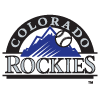 Colorado Rockies
Colorado Rockies
Center Field/Right Field/Designated Hitter: Randal Grichuk (260), Charlie Blackmon (300), Nolan Jones (532), Yonathan Daza (651), Sean Bouchard (679), Michael Toglia (696)
Kris Bryant will play left field as often as his body allows, but the rest of the outfield as well as the designated hitter spot seem unsettled in Denver. Grichuk's playing time seemed the safest earlier in the offseason, but he revealed in mid-February that he was on the mend from sports hernia surgery and will likely miss at least a bit of the regular season. His park-adjusted stats have been sub-par in most recent seasons (90 wRC+ over the last four years), and he'll be a free agent next winter, so his at-bats may not be safe if he struggles in his return. Blackmon's days as a Coors-aided fantasy star are long over. He's hit .267 with an average of 14.5 homers and 3.5 steals over the last two years, and he doesn't offer much defensively at this point. Daza looks like the center fielder by default until Grichuk returns. He makes enough contact (16.4 percent career strikeout rate) to be a .282 career hitter, but he has four homers and three steals in 264 total MLB games.
The door is seemingly open for one of the younger options to carve out a large number of Coors at-bats, though none of them seem like anything close to locks to do so. Jones was acquired from Cleveland in November. He managed a 14.5 percent barrel rate but had a 33.0 percent strikeout rate in 94 major-league plate appearances last season, right in line with his scouting reports. Bouchard hit .297/.454/.500 in a similarly brief (97 PA) cup of coffee last season, but that line was clearly inflated by a .404 BABIP, as he struck out at a 25.8 percent clip. He'll turn 27 in May. 24-year-old Toglia had the highest strikeout rate (36.7 percent) in his 120 MLB plate appearances.
Rotation: Austin Gomber (744), Ryan Feltner (750), Connor Seabold (750), Jose Urena (751)
Only German Marquez and Kyle Freeland appear locked into starting roles in Denver, with Antonio Senzatela set to join them once he makes his way back from a torn ACL in May. Gomber looked decent in his first year in Coors, but he slipped to a 5.56 ERA as a swingman last season as his strikeout rate dipped more than five points to 18.0 percent. Feltner posted an even worse 5.83 ERA in 20 outings (19 starts), with a similarly sub-par 19.6 percent strikeout rate. Connor Seabold's 11.29 ERA makes the aforementioned marks look award-worthy. It came in just five starts for Boston, however, and his 3.32 ERA in 19 Triple-A starts is somewhat encouraging. Urena made four relief appearances for Milwaukee last year before starting 17 games for the Rockies. His 5.01 ERA on the year was his best mark since 2018.
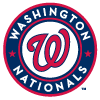 Washington Nationals
Washington Nationals
Outfield: Lane Thomas (285), Victor Robles (596), Stone Garrett (647), Jake Alu (718), Corey Dickerson (702), Alex Call (730)
Thomas' ADP reflects the fact that he's seemingly the only member of this group with a locked-in role, though his .241/.301/.404 line wouldn't guarantee him one on many other clubs. The Nationals are likely running out of patience with Robles after he finished with a wRC+ in the 60s for the third straight season, but at least he has a good glove in center field. Garrett hit .276/.309/.539 in 27 games as a 26-year-old rookie with Arizona last season. That line was propped up by a .370 BABIP, and his 32.1 percent strikeout rate and 3.6 percent walk rate were both awful, but he did hit the ball hard (9.4 percent barrel rate). Alu has yet to debut but is on the 40-man roster. He hit .301/.367/.508 line across the two highest levels of the minors last year while mostly playing second and third base, but he's taking reps in left this spring. Dickerson remains competent at the plate, but his .266/.313/.403 line over the last three years is as mediocre as it gets. Call showed a good eye (11.5 BB percentage) and minimal power (1.2 percent barrel rate) in 47 games as a rookie. His ability to play center field could give him a path to playing time.
Fifth Starter: Cade Cavalli (554), Chad Kuhl (751), Paolo Espino (751), Cory Abbott (751)
Maybe I'm being too kind to Patrick Corbin (6.31 ERA last season), MacKenzie Gore (4.50 ERA) and Josiah Gray (5.02 ERA), but considering the $59 million still on the former's contract and the latter pair's prospect pedigree, they seem safely locked into the first three spots in the rotation despite the lack of an explicit statement from the team. Trevor Williams, who recorded a 3.21 as a swingman for the Mets last season, will reportedly have a spot as well. With no indication that Stephen Strasburg will be ready to pitch anytime soon as he continues to deal with thoracic outlet syndrome, that leaves four pitchers fighting for the final job.
The Nationals would love for 2020 first-round pick Cavalli to make it clear that he deserves the job, but he's made just one MLB start and has battled shoulder issues as well as command problems (10.7 career walk rate in the minors). Kuhl is the sort of journeyman who could eat innings for a club like Washington, as he has a tolerable 4.74 ERA in a career that spans six seasons and 111 starts. He's merely a nonroster invitee and will have to prove his health after straining his triceps in October. Espino is a 36-year-old who's found his way to 19 starts in each of the past two seasons. He's walked just 5.7 percent of opposing batters in his career but owns a 4.70 ERA. Abbott hasn't shown much in 65.1 career innings as a swingman, with peripherals that support his 5.65 ERA.

















